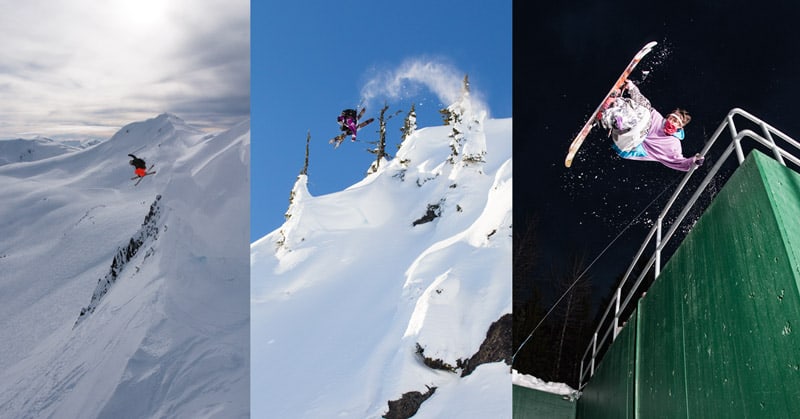
Recently the good folks from a new camera company called Light, got in touch with me and asked me an interesting question. They wondered how technology changes have played a part in my career as it evolved over the last few years. What a great question! Let’s see shall we…
Evolution of photographic technology
Some photographers pay little attention to technology and staunchly stand behind phrases like “it’s the photographer, not the camera”. I don’t think it’s quite as black and white as that. Putting a better camera in the hands of someone who is photographically less talented isn’t going to make them a better photographer, that much is certainly true. However, equipping a good photographer with newer technology can allow them to create their art in a way that wasn’t previously possible. I think it would be wrong to say that technology can make their art “better”, but it can expand the range of situations in which they can make that art in the first place. That has been my experience with changing technology over the 10+ years of my career so far, and it’s one of the big reasons that I keep a close eye on evolving technologies. The other reason is that I’m just a massive photo nerd! 🙂
In all seriousness, when Light contacted me to ask me the question, I was already well aware of their new camera, the L16, and done extensive reading about it. I never once looked at it and thought “this is going to make my photos better”, or “this is going to make me a better photographer”, I examined it by asking myself the question: “how can I use it to take photos that otherwise wouldn’t have been possible with my current gear?”. This is how I approach every major equipment purchase for my business.
Henri Cartier-Bresson famously talked about the “decisive moment”. The point at which a scene transcends from relative normality, ever so briefly into something photographically special or spectacular. It’s usually a fleeting moment, and I examine all new technologies with an eye on how they can help me capture that moment. For example, I recently purchased a Sony RX100 MkIV. By all accounts, as I write this essay, this is the current king of the point and shoot camera market. With several DSLRs at my disposal, why would I buy a point and shoot camera, even if it is the best on the market? The best point and shoot camera is still a long way behind the image quality of even a low end DSLR. If we think in terms of the decisive moment, I simply purchased the RX100 to make sure that I actually had a camera with me when that moment occurred. It’s not practical to carry my DSLR all the time, but the little Sony camera can be easily lost in a jacket pocket.
High ISO performance
The biggest change in camera technology over my career has been image quality at high ISO. Actually, let me rephrase that… The biggest relevant change in camera technology over my career has been image quality at high ISO. If you ask the question to different types of photographer, you’ll almost certainly get several different answers depending on their specific needs. I can well imagine that some sports photographers would answer that improved autofocus systems has been the biggest change, and fine-art photographers who have a large print sales component to their business would tell you increased image resolution was their number one change. Everyone has slightly different requirements and I don’t believe that there’s been a single, totally game changing technology introduction during my career that would have all photographers singing the same tune. The fact is that camera improvements have been pretty linear, especially when you compare them to technology advancements in other areas over the same time period. On the outside, the only slight giveaway that my Canon 10D is older than my current 5D Mark III, is that the 10D had a smaller LCD screen. When you stop to think about it, that’s actually quire remarkable isn’t it? Cameras still look like cameras, and in fact they still look like film cameras, despite there being no real need for that form factor anymore.
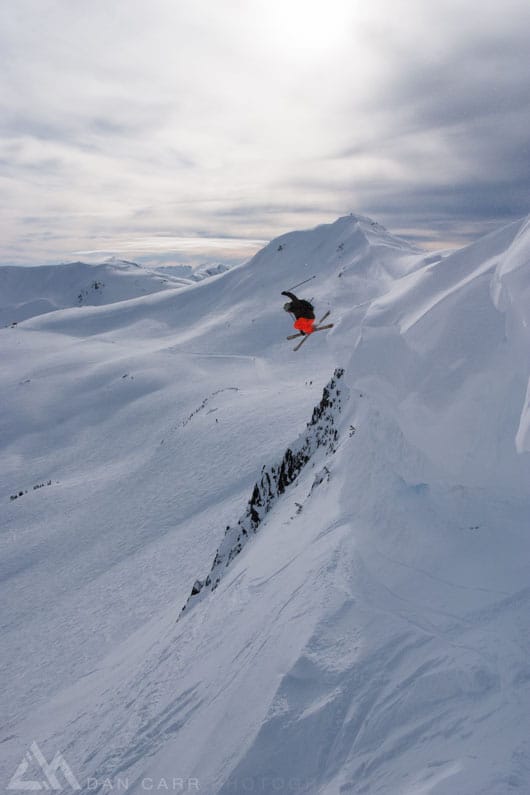
The ability to shoot successfully at higher ISOs has made a difference for me, though. One example is when I’m shooting wildlife, it allows me to begin shooting earlier in the morning, and keep shooting longer into dusk when animals are often more active. It doesn’t make my photos better, it simply allows me more opportunity to make that great shot or be present for a decisive moment. My 10D was relatively noisy at ISO 400, but my 5D Mark III is comfortable at ISO 3200, and I often push it even further than that. High ISO advancements have also delivered better performance in APS-C cameras recently, like the EOS 7D Mark II. The more tightly packed photosites of APS-C sensors will always keep them a step behind full frame cameras, but I’ve found the 7D Mark II has now crossed the boundary into professionally acceptable high ISO results. I truly hated the ISO quality of the original 7D five years ago, but this year many of my favourite images have been shot with the Mark II version. The longer 1.6x reach of my lenses on an APS-C camera allow another perspective on a subject that otherwise wouldn’t be possible on a full frame camera.

Improved ISO quality also means that you can more readily rely on increasing your ISO, rather than using a wider aperture to achieve a correct exposure. In turn, this means that lenses with very wider apertures are less necessary unless you specifically need them for their ability to produce an image with a very shallow depth of field. When I started with my Canon 10D, and my self imposed ISO 400 limit, I carried around a 70-200 f/2.8 L IS with me everywhere I went. I needed that wide aperture to get to the shutter speeds I’d often want for the winter sports photography that was such a large part of my business. That lens remained with me after purchasing a Canon 1D Mark IIN, because ISO performance was only about one stop better with that camera. The next camera I purchased was an EOS 1D Mark IV, and this was becoming much more capable. I readily shot at ISO 1000 in bright light when I needed super fast shutter speeds and quickly realized I didn’t need f/2.8 anymore for my work. That lens was sold and replaced with a 70-200 f/4 which could achieve the same kind of image but at something like half the weight in my bag. Less weight means two things; Firstly, I’m more likely to carry it with me and therefore have more chances to put it to use and have it to hand when a decisive moment presents itself in a perfect situation for that focal length. Secondly, it means less fatigue and that means I’m more likely to shoot for longer periods of time, or ski/hike/bike further to find otherwise unseen images.
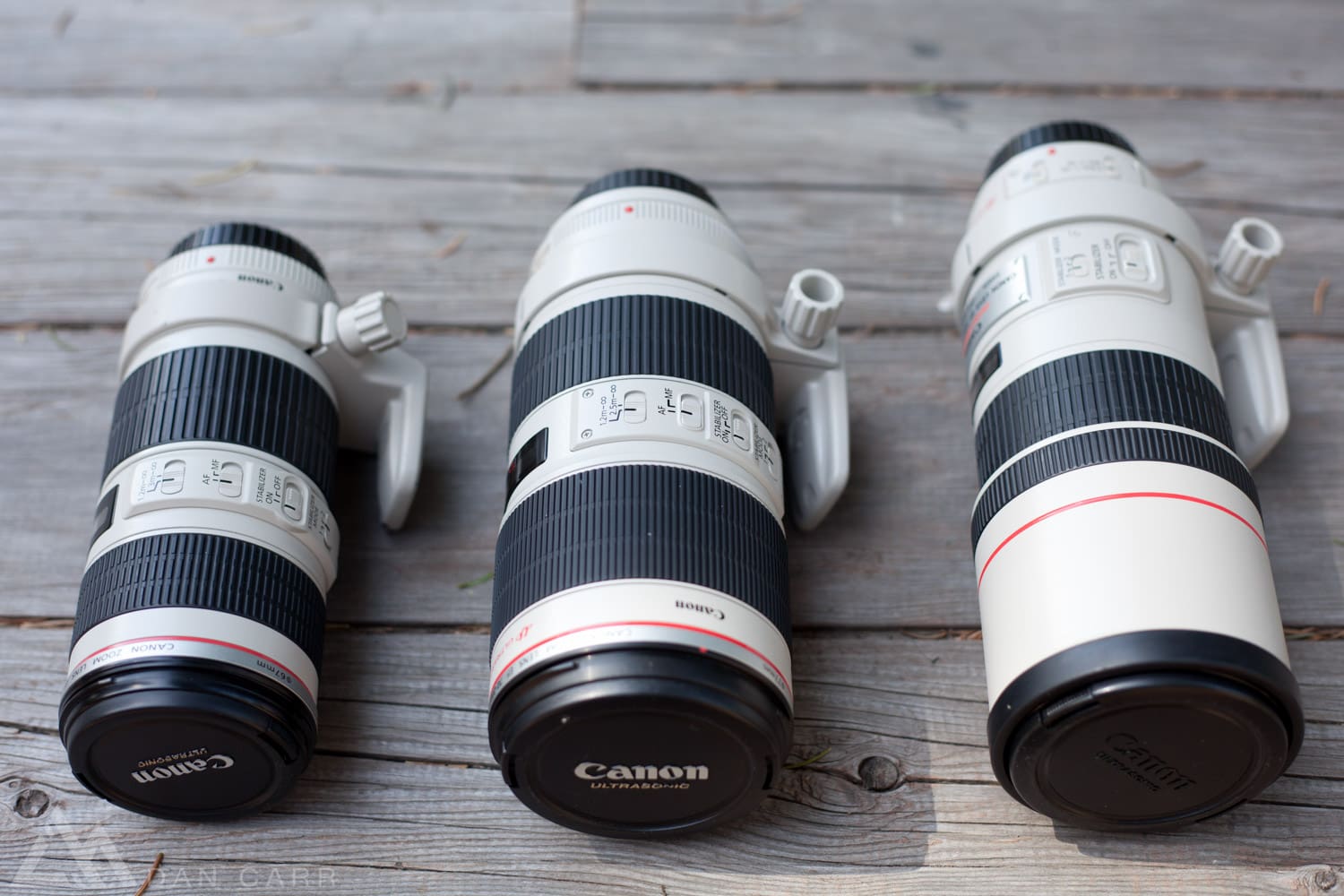
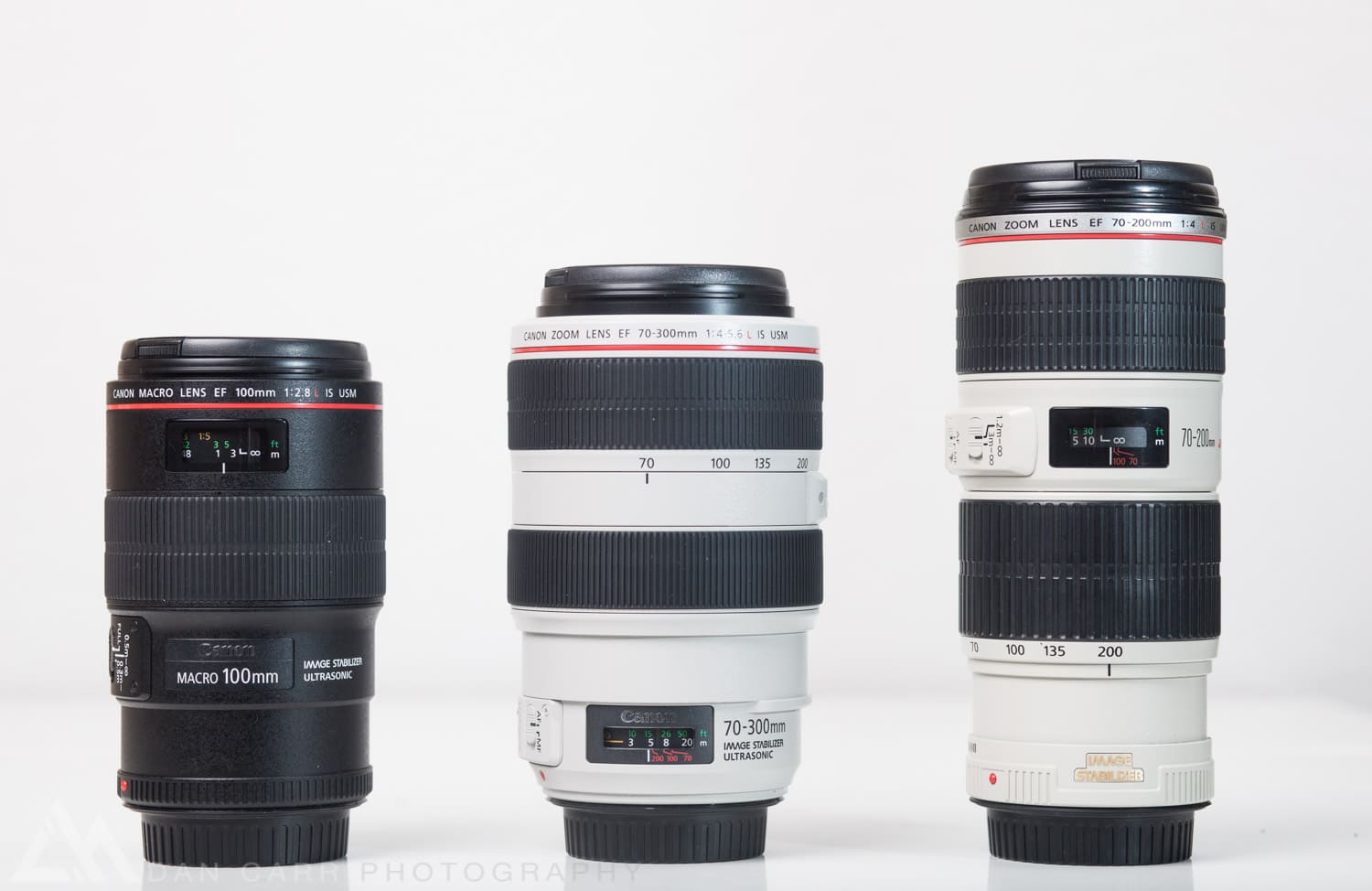
After the 1D Mark IV I moved to the full frame 5D series cameras and started with the 5D Mark II. The move to full frame resulted in another appreciable jump in ISO quality and caused the sale of my then beloved 70-200 f/4 IS, which I replaced with a 70-300 f/4-5.6 L IS. This lens, brand new from Canon at the time, delivered similar sharpness to the 70-200, but also gave me a longer reach in a single lens. The maximum f/5.6 aperture at the long end of the zoom simply wasn’t a concern to me with the 5D Mark II’s high ISO performance and it meant I could sell my 300mm f/4 and save an incredible amount of space and weight in my pack.
In the last couple of years I’ve been using the 5D Mark III as my primary camera and this year I switched the 70-300 f/5.6 L IS for the new 100-400 f/4.5-5.6 L IS II. I don’t miss the small gap between 70mm and 100mm, so this adds a further 100mm to my reach while only sacrificing 1/3 stop of maximum aperture from f/4 to f/4.5. This lens is insanely sharp, but I wasn’t disappointed with the sharpness of any of the previous lenses so it’s the wide zoom range that really makes a difference to me. The fact that I’m happy to travel with this lens as my primary mid-range telephoto is not a testament to Canon’s lens designers really (although they did a fantastic job), it’s more a testament to the camera’s high ISO performance which means I’m happy to use a lens with a limited and variable maximum aperture.
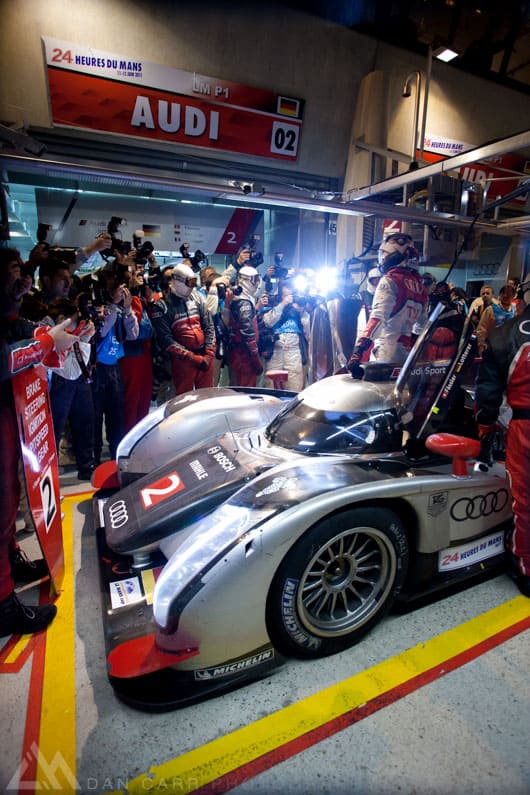
Flash photography changes
My mid-range zoom has been by far the most changed lens in my lineup as I’ve adjusted it to suit the evolving cameras I’ve purchased. If I look back on my photo gear evolution, another area stands out as one that’s been in constant flux: my flash kit. I began my first flash kit with cheap Vivitar 285 HVs purchased on eBay and I think I had five of them at one point. My flashes are mainly used for shooting action sports and in order to get nice sharp images of moving subjects with flashes, you have to shoot with flashes that are able to overpower the ambient light. This is required because typically you’re limited to a low shutter speed when using flashes, so as to not have problems with the flash burst occurring at a point where the camera’s shutter is covering the sensor. With a slow shutter speed (1/250 is common), you are relying on the pulse of the flash to freeze the subjects motion, rather than the shutter speed, but it only works when you are able to underexpose the ambient light by about 1-2 stops.
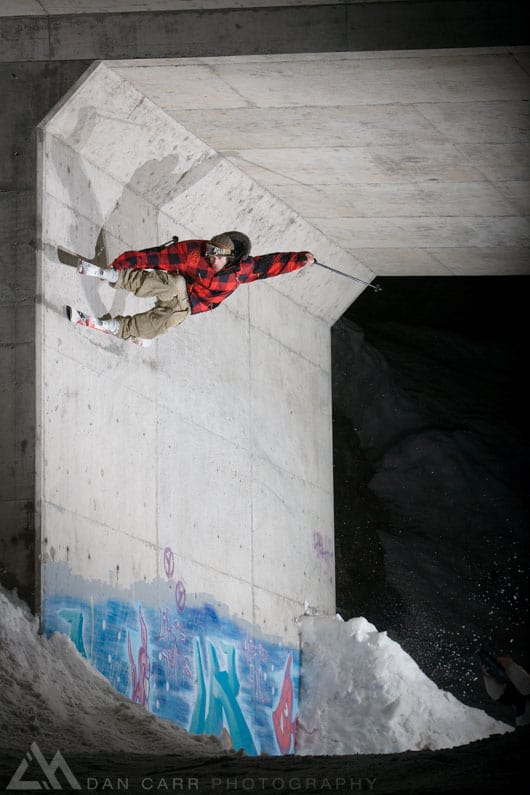
My cheap old Vivitars were not very powerful and it meant they were only really good for shooting photos at night where ambient light was low. After a couple of years I made the considerable investment in an Elinchrom Ranger RX battery flash system. This thing was a monster to travel with, and the whilst totally legal, the huge, heavy lead-acid battery caused me no end of air travel problems, including being escorted off a packed 747 in Auckland airport just minutes before the flight was due to depart. What it gave me, though, was POWER. 1100w/s of power is enough to overpower the sun on a bluebird day at about 15-20ft. Suddenly I could use flashes in pretty much any condition, as long as I could carry the damn thing. This was also helped by the move to a Canon 1-Series camera which could sync at 1/320 instead of 1/250 like my older 10D.
For many years I carted that thing around the world and up and down countless mountains. I’m sure it’s responsible for at least half of the long-term back troubles that I suffer from these days! I’m not sure when it was exactly, but at some point roughly 5 or 6 years ago, flash trigger company Pocketwizard launched a technology they called Hypersync. Essentially this technology allowed you to adjust the timing of your flash burst relative to the movement of your camera’s shutter. It meant that it was possible to be much more precise, and this meant you could use a faster shutter speed without fear of causing shutter shadows in the image. Again, it’s a bit of a complicated topic for those that aren’t familiar with it, but it was a game changer for me! Suddenly I was able to shoot images at 1/1000 of a second instead of 1/320.
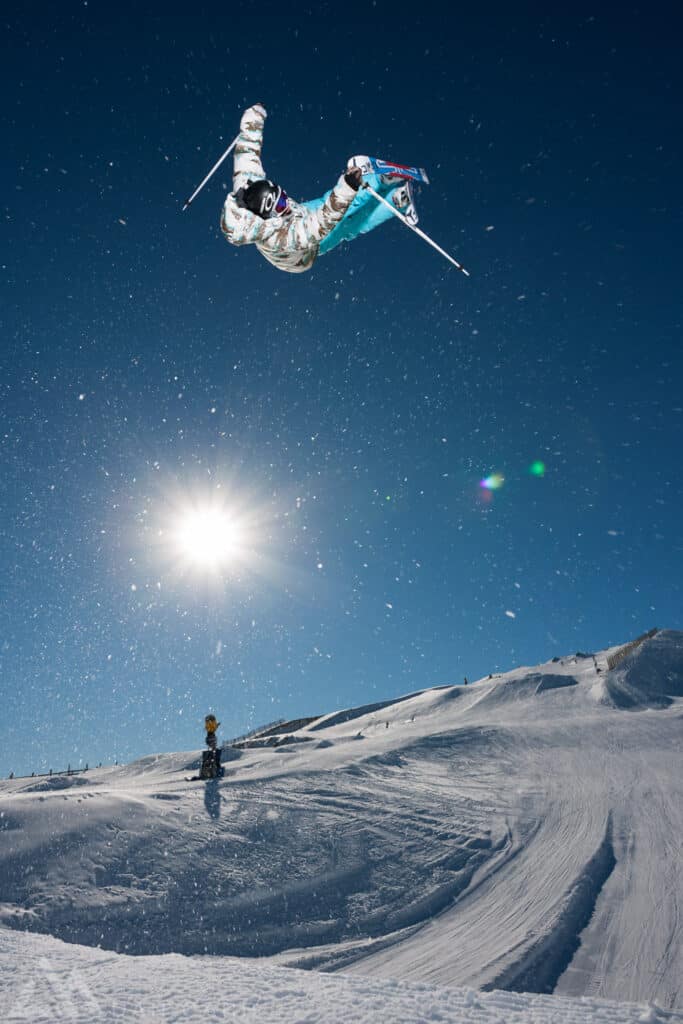
With flash photography the shutter speed controls your ambient light, while the aperture controls the amount of light on your subject. This change in shutter speed from 1/1000 to 1/320 was 1 2/3 stops of light, which meant that I could now use a flash system that was only capable of outputting 1 2/3 stops of light less than my Elinchrom Ranger, and still be able to over power the ambient light in the same way that I was used to! A less powerful flash system would be considerably easier to carry! I sold my Elinchrom Ranger and started using the Einstein monolight which weighed (including battery pack) much less than half that of the Ranger. With the old heavy Ranger I would have to hire an assistant to carry it around all day on their back. With the Einstein, I was able to squeeze it into my existing photo pack and sometimes carry it around “just in case”. Something that would have been unthinkable with the Ranger pack.
Fast forward another few years and things are changing again in the world of flash photography with the invention of wireless TTL. TTL is automated flash control and it was previously limited to the realm of flashes that were attached directly to your camera. In the last few years this has changed, and companies like Profoto and Phottix have launched large battery powered strobes with TTL control. TTL flashes are able to shoot at much higher shutter speeds than even the Hypersonic technology that Pocketwizard came up with. They tend to offer a bit less power at these faster shutter speeds so there’s a balancing act between speed and power, but it’s much easier to work with that the often fiddly Hypersync process. As a result, this year I ditched the Einstein and now use a Phottix Indra 500. Now I’m down from 640 w/s to 500 w/s but I have more control again with the shutter speed and the Indra is a smaller package than the Einstein.
Just a few weeks ago, Elinchrom announced a new flash head and high speed sync system called HiSync. It looks like their ELB400 flash will be able to achieve even higher flash sync speeds than similar systems from Profoto and Phottix because they have designed a specific flash head for the purpose of higher sync speed, the HS head. At only 400w/s of power, the ELB 400 is tiny in comparison to my old Elinchrom Ranger, but the results should be comparable. I’ll be adding one to my kit very soon…
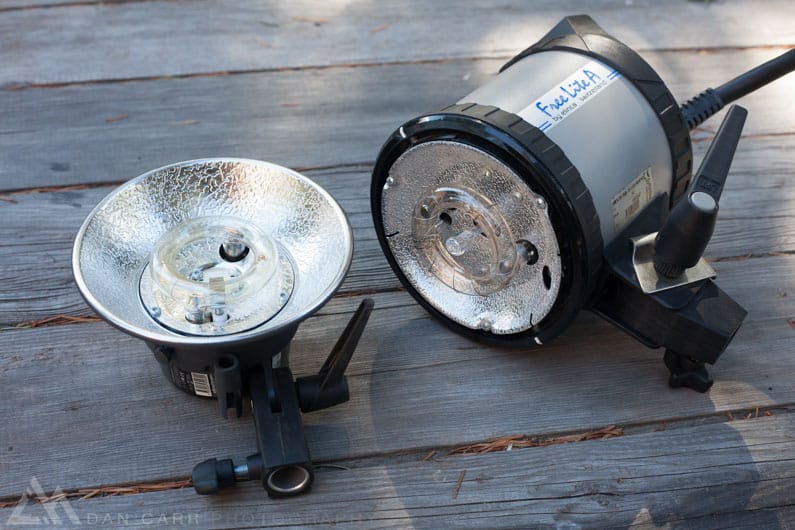
Like I said, I’m sure if you asked other photographers the same question, you’d get a bunch of different answers but these are the two areas that have greatly affected my photography over the last ten or so years. My photography hasn’t been improved by these technological changes, but it has made several things easier and in turn, that has afforded me more opportunities to achieve them over the years.
What this post isn’t
I want to be clear that this is not a sponsored post that has been paid for in any way by Light. They simply happened to ask me an interesting question and said they might share my answer. It was my own choice to even mention their name and link to their site in this article. I think they are bringing some fascinating technology to the industry and if you’re a photo tech geek like me, you can check out a pretty awesome hour long video by their CTO on their website. It’ll be interesting to see whether I write a similar article in another ten years time, and whether Light’s cameras and technology will become part of my story then. It’s always cool to see new companies jump in and start to stir the pot. The last company that claimed their technology would change photography was Lytro, with their cameras that allowed for photos to be focussed after they were taken. Haven’t heard much from them recently have we? I believe their problem was they answered a question that photographers simply weren’t asking in the first place. I’ve no desire to change the focal point of my images later, because that’s an entirely different image that would require a different composition. Photographers aren’t just monkeys randomly snapping scenes in front of them in the hope that something will eventually turn out.
On the other hand, on a daily basis I wish my camera kit was smaller and lighter, and as we saw from my own camera gear history, the majority of my changes over the years have been to move towards lighter equipment. The Light L16 does seek to solve this problem, so I’m extremely excited to see just how capable these things are when they start shipping in 2016.



